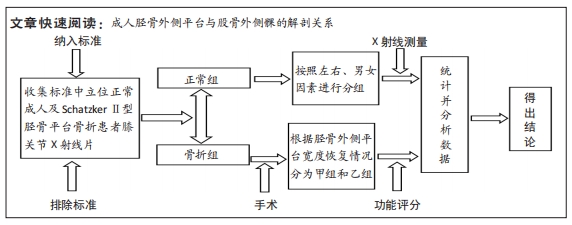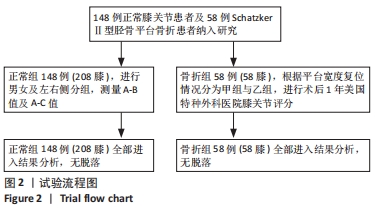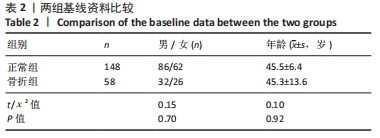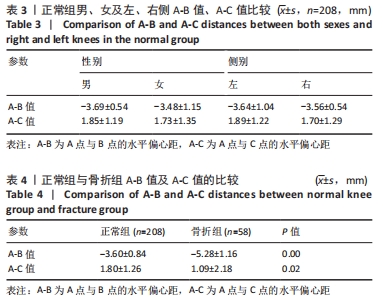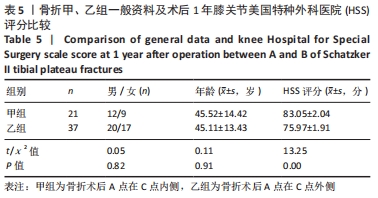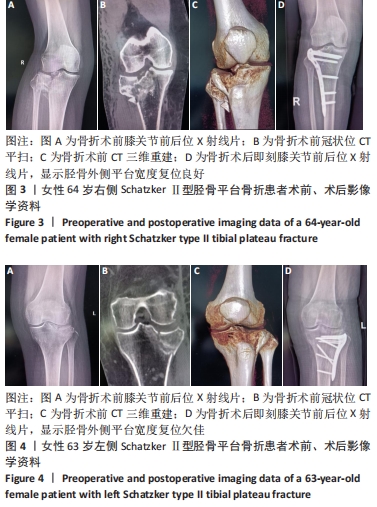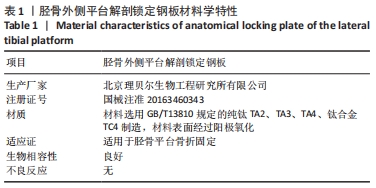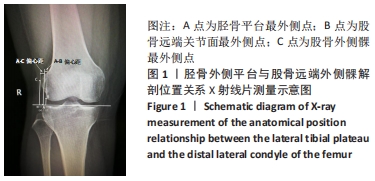[1] CHEN W, LV H, LIU S, et al. National incidence of traumatic fractures in China: a retrospective survey of 512 187 individuals. Lancet Glob Health. 2017;5(8):807-817.
[2] KUMAR A, PASSEY J, KHAN R, et al. Defining the “mediolateral widening of tibial plateau” as a guide for reduction in tibial plateau fractures: An Indian perspective. J Clin Orthop Trauma. 2020;11:S66-S70.
[3] LE BARON M, CERMOLACCE M, FLECHER X, et al. Tibial plateau fracture management: ARIF versus ORIF - clinical and radiological comparison. Orthop Traumatol Surg Res. 2019;105(1):101-106.
[4] 高嘉翔,邢丹,林剑浩.下肢力线的测量及其在全膝关节置换术中的应用[J].中华外科杂志,2020,58(6):478-480.
[5] ZAWAM SHM, GAD AM. Arthroscopic Assisted Reduction and Internal Fixation of Tibial Plateau Fractures. Open Access Maced J Med Sci. 2019;7(7):1133-1137.
[6] MITEV K, ZAFIROSKI G, MLADENOVSKI S, et al. Arthroscopic Reduction and Percutaneous Osteosynthesis of Tibial Plateau Fractures. Open Access Maced J Med Sci. 2019;7(5):779-781.
[7] THAMYONGKIT S, FAYAD LM, JONES LC, et al. The distal femur is a reliable guide for tibial plateau fracture reduction: a study of measurements on 3D CT scans in 84 healthy knees. J Orthop Surg Res. 2018;13(1):224.
[8] JOHANNSEN AM, COOK AM, GARDNER MJ, et al. Defining the width of the normal tibial plateau relative to the distal femur: Critical normative data for identifying pathologic widening in tibial plateau fractures. Clin Anat. 2018;31(5):688-692.
[9] THIAGARAJAH S, HANCOCK GE, MILLS EJ, et al. Malreduction of tibial articular width in bicondylar tibial plateau fractures treated with circular external fixation is associated with post-traumatic osteoarthritis. J Orthop. 2019;16(1):91-96.
[10] GARDNER MJ, YACOUBIAN S, GELLER D, et al. Prediction of soft-tissue in juries in Schatzker II tibial plateau fractures based on measurements of plain radiographs. J Trauma. 2006;60:319-323.
[11] DURAKBASA MO, KOSE O, ERMIS MN, et al. Measurement of lateral plateau depression and lateral plateau widening in a Schatzker type II fracture can predict a lateral meniscal injury. Knee Surg Sports Traumatol Arthrosc. 2013;21:2141-2146.
[12] YAO X, ZHOU K, LV B, et al. 3D mapping and classification of tibial plateau fractures. Bone Joint Res. 2020;9(6):258-267.
[13] CRIJNS TJ, MELLEMA JJ, ÖZKAN S, et al. Classification of tibial plateau fractures using 3DCT with and without subtraction of unfractured bones. Injury. 2020;51(11):2686-2691.
[14] ZHENG Z, YU Y, CHANG H, et al. Establishment of Classification of Tibial Plateau Fracture Associated with Proximal Fibular Fracture. Orthop Surg. 2019;11(1):97-101.
[15] ROBLOT V, GIRET Y, BOU ANTOUN M, et al. Artificial intelligence to diagnose meniscus tears on MRI. Diagn Interv Imaging. 2019;100(4): 243-249.
[16] SAYGILI A, ALBAYRAK S. Knee Meniscus Segmentation and Tear Detection from MRI: A Review. Curr Med Imaging Rev. 2020;16(1):2-15.
[17] ARIYACHAIPANICH A, KAYA E, STATUM S, et al. MR imaging pattern of tibial subchondral bone structure: considerations of meniscal coverage and integrity. Skeletal Radiol. 2020;49(12):2019-2027.
[18] KABIRIAN N, JIANG D, FLEMING CME, et al. Restoring Condylar Width: Radiographic Relationship Between the Lateral Tibial Plateau and Lateral Femoral Condyle in Normal Adult Knees. Journal of Orthopaedic Trauma. 2019;33(4):180-184.
[19] PARKKINEN M, LINDAHL J, MÄKINEN TJ, et al. Predictors of osteoarthritis following operative treatment of medial tibial plateau fractures. Injury. 2018;49(2):370-375.
[20] WANG J, JIE W, WANG M. The distinct prediction standards for ra- diological assessments associated with soft tissue injuries in the acute tibial plateau fracture. Eur J Orthop Surg Traumatol. 2015;25(5):913-920.
[21] SCHLATTERER DR, KESSLER R, DONAHUE J, et al. The Ratio of the Distal Femur Width to the Tibial Plateau Width with Advancing Age. J Knee Surg. 2021. doi: 10.1055/s-0040-1721125.
[22] RAMPONI DR, MCSWIGAN T. Tibial Plateau Fractures. Adv Emerg Nurs J. 2018;40(3):155-161.
[23] RUDRAN B, LITTLE C, WIIK A, et al. Tibial plateau fracture: anatomy, diagnosis and management. Br J Hosp Med (Lond). 2020;81(10):1-9.
[24] CHANG H, ZHENG Z, SHAO D, et al. Incidence and Radiological Predictors of Concomitant Meniscal and Cruciate Ligament Injuries in Operative Tibial Plateau Fractures: A Prospective Diagnostic Study. Sci Rep. 2018;8(1):13317.
[25] CHEN Y, CHEN S, LIU H, et al. Is traumatic meniscal lesion associated with acute fracture morphology changes of tibia plateau? A series of arthroscopic analysis of 67 patients. World J Clin Cases. 2021;9(1):81-90.
[26] JAIN A, ILIOPOULOS E, TROMPETER A. Widening is a predictive factor of bucket handle tear in tibial plateau fractures. Eur J Orthop Surg Traumatol. 2020;30(4):695-699.
[27] 范鑫超,邱长茂,任中缘,等.关节镜下利用纳米羟基磷灰石棒治疗SchatzkerⅢ型胫骨平台骨折:6个月随访[J]. 中国组织工程研究, 2021,25(10):1571-1576.
[28] YAN B, SUN J, YIN W. The prevalence of soft tissue injuries in operative Schatzker type IV tibial plateau fractures. Arch Orthop Trauma Surg. 2021;141(8):1269-1275.
[29] KOLB JP, REGIER M, VETTORAZZI E, et al. Prediction of meniscal and ligamentous injuries in lateral tibial plateau fractures based on measurements of lateral plateau widening on multidetector computed tomography scans. BioMed Res Int. 2018;2018:1-5.
|
